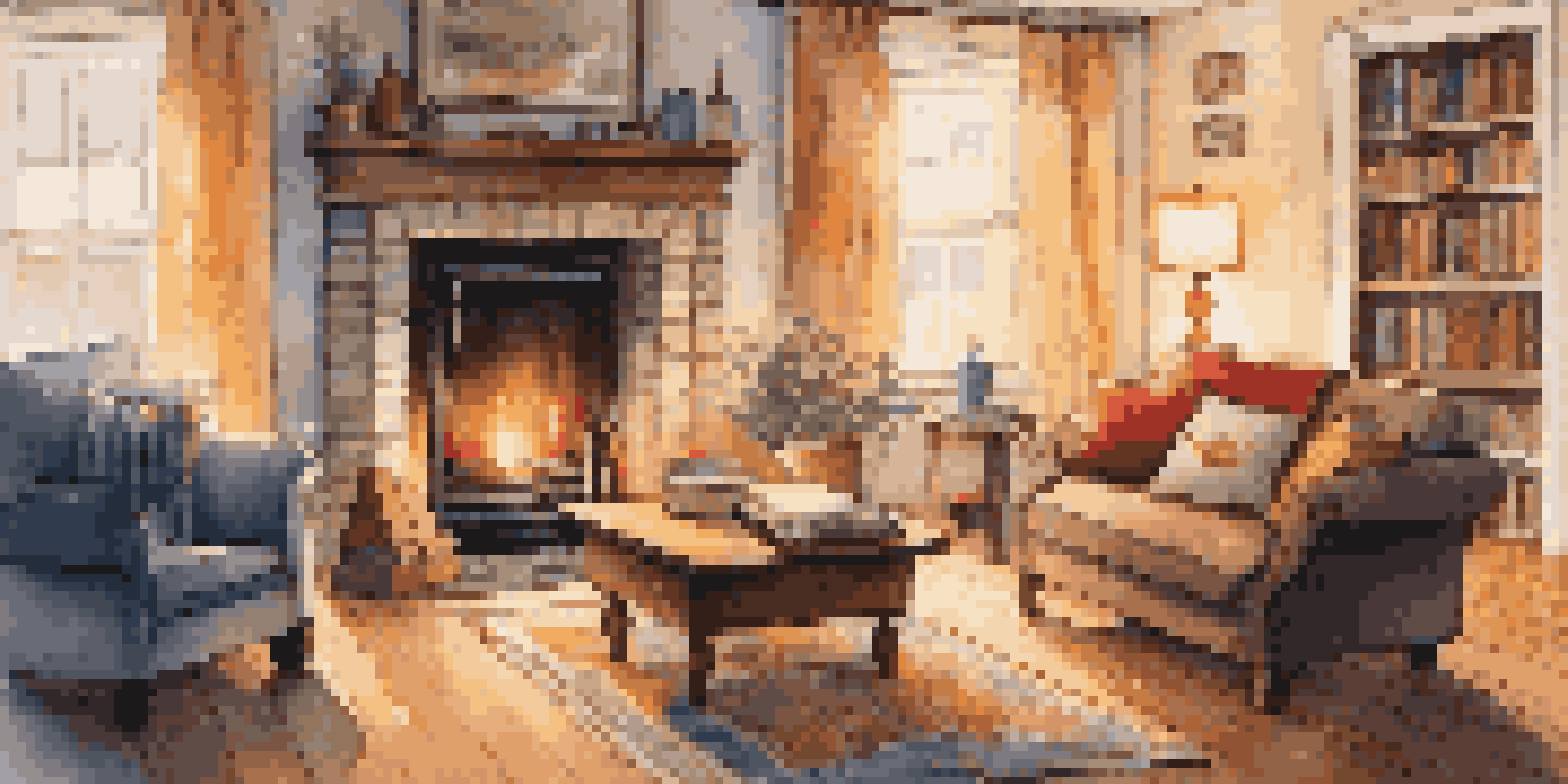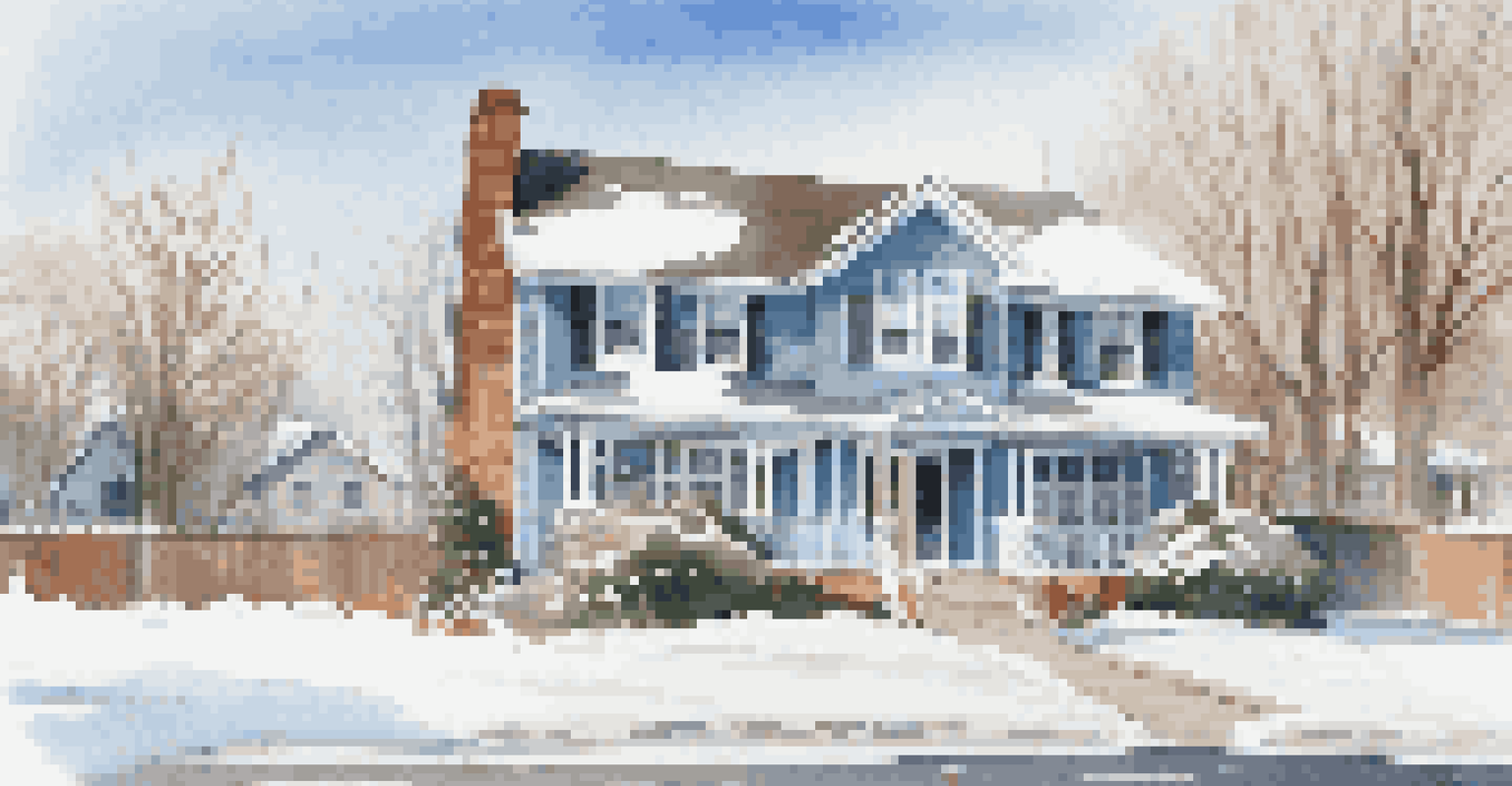Winterizing Your Home: Key Maintenance Tasks to Complete

Inspect and Seal Windows and Doors for Drafts
As winter approaches, it's crucial to check your windows and doors for drafts. Even small gaps can let cold air in and warm air out, increasing your heating bills. Use weather stripping or caulk to seal any leaks you find, ensuring your home stays cozy and energy-efficient.
An ounce of prevention is worth a pound of cure.
If you have older windows, consider adding storm windows or thermal curtains for an extra layer of insulation. These simple upgrades can make a significant difference in maintaining a comfortable indoor temperature. Plus, they can enhance your home's aesthetic and value.
Not only will sealing drafts improve your comfort, but it will also protect your home from moisture that can lead to mold issues. So, take a few moments to inspect these areas and make the necessary adjustments before the cold sets in.
Check Your Heating System for Optimal Performance
Before the first frost hits, it's wise to check your heating system. Whether you have a furnace, boiler, or heat pump, ensuring it's in good working order will prevent any chilly surprises later. Change the air filter to maintain airflow and efficiency, and consider scheduling a professional inspection.

A well-maintained heating system not only keeps you warm but can also extend its lifespan and save you money on energy bills. Regular maintenance helps catch issues early, preventing costly repairs down the line. Think of it as a health check-up for your home!
Seal Windows and Doors for Comfort
Inspecting and sealing drafts around windows and doors can significantly enhance your home's energy efficiency and warmth during winter.
Don't forget to check the thermostat settings as well. Programmable thermostats can help you save on energy costs by adjusting the temperature when you’re away. This small change can lead to significant savings over the winter months.
Prepare Your Plumbing to Prevent Freezing Pipes
One of the worst winter nightmares for homeowners is dealing with frozen pipes. To avoid this, insulate pipes in unheated areas, like basements or attics, using foam sleeves or insulation tape. This simple step can save you from a major headache and costly repairs.
The best way to predict the future is to create it.
Additionally, during extreme cold spells, let faucets drip slightly to keep the water moving. This can help prevent the water in pipes from freezing. If you're going away for an extended period, consider shutting off the main water supply and draining the pipes.
Don't overlook outdoor faucets either! Disconnect hoses and drain any remaining water to prevent freezing and cracking. Taking these precautions can ensure your plumbing remains intact throughout the winter season.
Inspect Your Roof and Gutters for Winter Readiness
Your roof and gutters play a crucial role in protecting your home from winter weather. Inspect your roof for any missing or damaged shingles, as these can lead to leaks when snow and ice accumulate. If you find any issues, it's best to address them before the first snowfall.
Cleaning out gutters is equally important. Clogged gutters can lead to ice dams, which can cause water to back up under your shingles and into your home. Make sure they are clear of leaves and debris to ensure proper drainage during winter storms.
Service Heating Systems Regularly
Regular maintenance of your heating system, including checking filters and scheduling inspections, can prevent unexpected breakdowns and save on energy costs.
Consider adding gutter guards to minimize debris accumulation in the future. This can save you time and effort during the cold months, allowing you to focus on enjoying the winter season rather than scrambling to fix potential issues.
Service Your Fireplace and Wood Stove for Safe Use
If you love cozying up by the fire, it’s essential to service your fireplace and wood stove before winter. Start by inspecting the chimney for blockages or creosote buildup, which can pose a fire hazard. A professional cleaning is often recommended to ensure safe operation.
Check the seals on doors and glass to prevent smoke from escaping into your home. If you use a wood stove, ensure that it is properly vented to avoid dangerous fumes. Safety first should always be your motto when it comes to heating your home.
Stock up on firewood and store it in a dry place to have it ready when the temperatures drop. With a little preparation, you can enjoy the warmth and ambiance of a fire while keeping your family safe.
Test Smoke and Carbon Monoxide Detectors
As you prepare your home for winter, don’t forget about safety devices like smoke and carbon monoxide detectors. These lifesaving devices should be tested monthly, but winter is a perfect time to check their batteries and functionality. After all, you want peace of mind while staying warm.
Replace batteries if needed, and ensure that detectors are installed in every sleeping area and on every level of your home. Carbon monoxide is especially dangerous during winter when heating systems are in heavy use, making this task even more critical.
Prepare Plumbing to Avoid Freezing
Insulating pipes and letting faucets drip can help prevent the costly nightmare of frozen pipes during extreme winter temperatures.
Consider upgrading to smart detectors that can send alerts to your phone. This technology gives you an added layer of security, allowing you to monitor your home even when you’re not there.
Prepare Your Outdoor Spaces for Winter Challenges
Don't neglect your outdoor spaces when winterizing your home! Start by trimming trees and shrubs to prevent branches from snapping under the weight of snow and ice. Ensuring that your yard is tidy can help avoid damage to your property and keep your landscape healthy.
If you have outdoor furniture, either store it away or cover it to protect it from harsh winter elements. This will prolong the life of your furniture and save you time next spring when you’re ready to enjoy your outdoor spaces again.

Lastly, ensure walkways and driveways are clear and safe. Stock up on ice melt or sand to prevent slips and falls during icy conditions. Taking these precautions will make your home not just winter-ready but also safer for you and your guests.